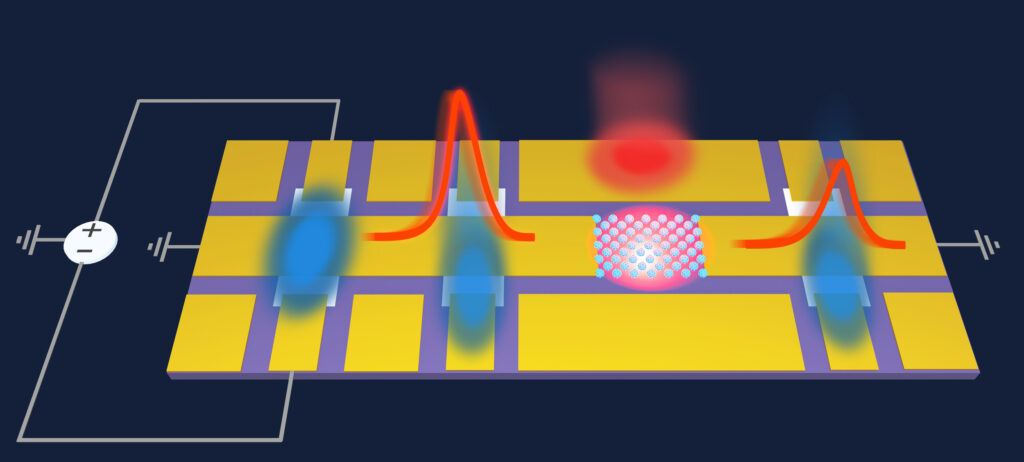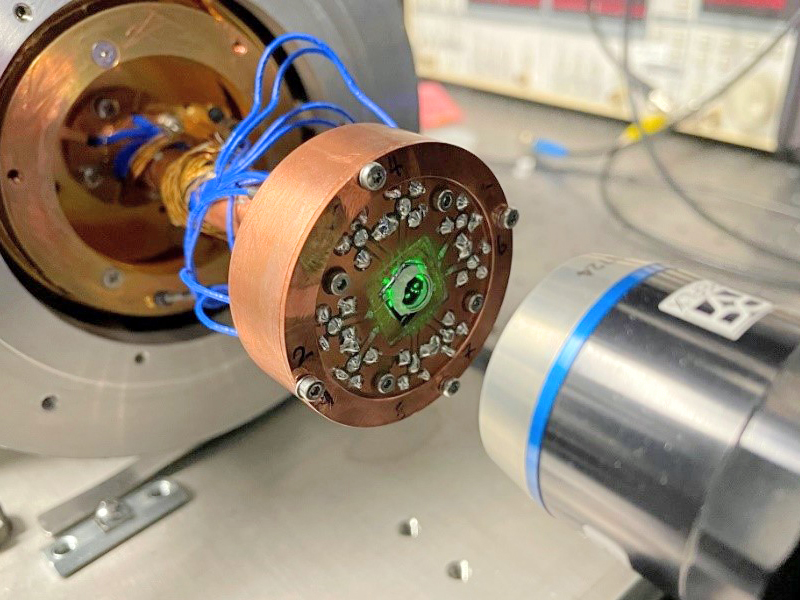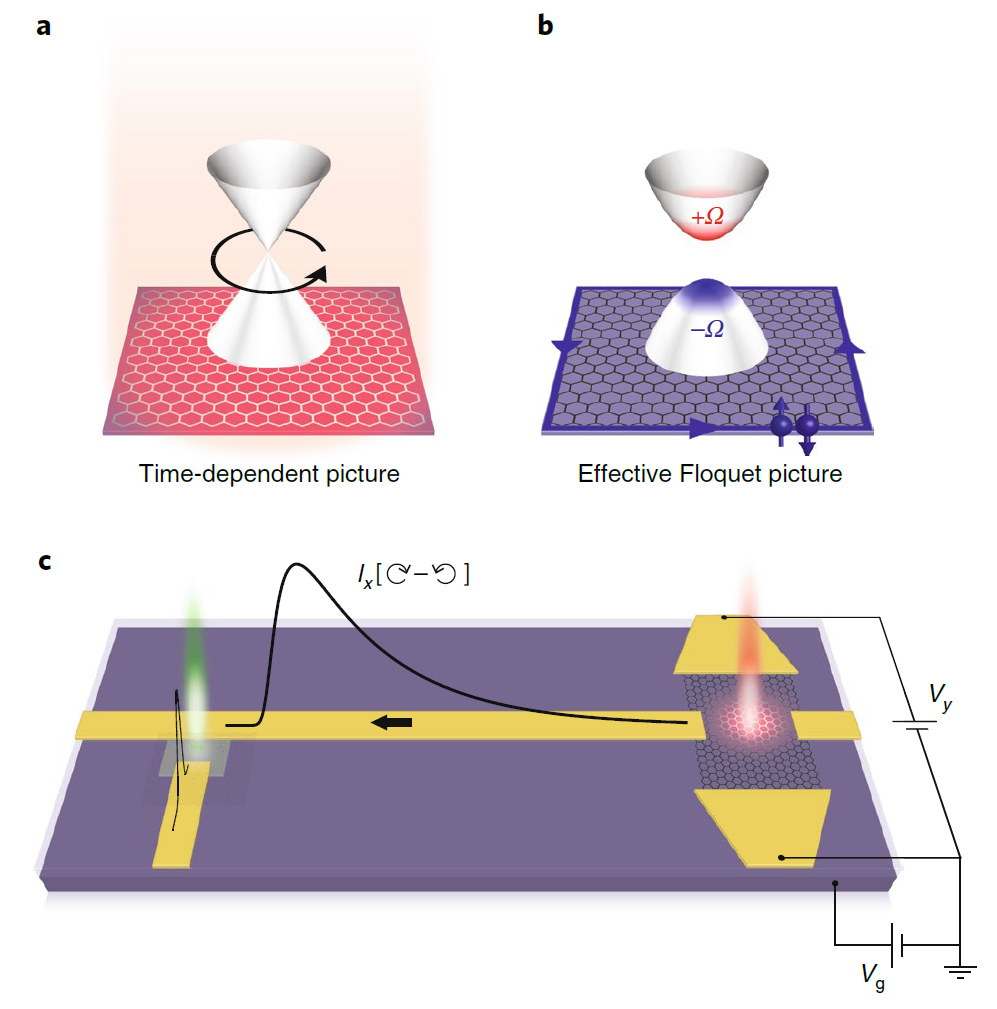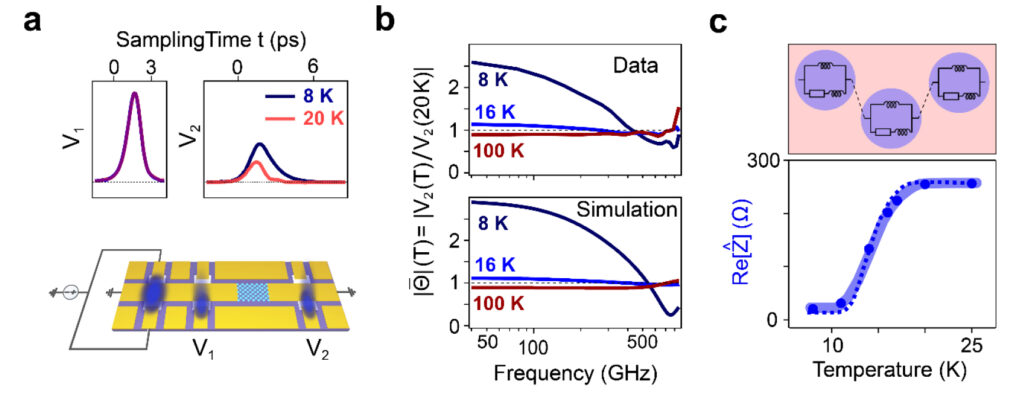At equilibrium, transport properties are key in revealing fingerprints of electronic interactions and long range orders in quantum materials. Conventionally, these are measured in the vicinity of zero frequency. We have developed a platform to extend these measurements to the ultrafast time scale. To this end, a microstructured chip composed of THz-waveguides and photo-conductive switches is used to generate and transport sub-picosecond current pulses. These pulses propagate through the material under study and are sampled, after transmission, yielding the transport properties from DC to 1 THz frequency. As this technique operates in the time domain, it also allows probing of transient states with sub-picosecond resolution, such as light-induced topological phases and non-equilibrium superconductivity. Additionally, probe current pulses with peak amplitudes in excess of tens of GA/m2 can be generated, giving access to nonlinear transport features such as critical currents in superconductors.

Relevant publications
Light-induced anomalous Hall effect in graphene
J. W. McIver, B. Schulte, F.-U. Stein, T. Matsuyama, G. Jotzu, G. Meier and A. Cavalleri
Nature Physics, 16, 38–41( 2020)
Abstract
Many non-equilibrium phenomena have been discovered or predicted in optically driven quantum solids. Examples include light-induced superconductivity and Floquet-engineered topological phases. These are short-lived effects that should lead to measurable changes in electrical transport, which can be characterized using an ultrafast device architecture based on photoconductive switches. Here, we report the observation of a light-induced anomalous Hall effect in monolayer graphene driven by a femtosecond pulse of circularly polarized light. The dependence of the effect on a gate potential used to tune the Fermi level reveals multiple features that reflect a Floquet-engineered topological band structure. similar to the band structure originally proposed by Haldane. This includes an approximately 60 meV wide conductance plateau centred at the Dirac point, where a gap of equal magnitude is predicted to open. We find that when the Fermi level lies within this plateau the estimated anomalous Hall conductance saturates around 1.8 ± 0.4 e2/h.
Superconducting nonlinear transport in optically driven high temperature K3C60
E. Wang, J. Adelinia, M. Chavez-Cervantes, T. Matsuyama, M. Fechner, M. Buzzi, G. Meier, A. Cavalleri
Nature Communications 14, 7233 (2023)
Abstract
Optically driven quantum materials exhibit a variety of non-equilibrium functional phenomena, which to date have been primarily studied with ultrafast optical, X-Ray and photo-emission spectroscopy. However, little has been done to characterize their transient electrical responses, which are directly associated with the functionality of these materials. Especially interesting are linear and nonlinear current-voltage characteristics at frequencies below 1 THz, which are not easily measured at picosecond temporal resolution. Here, we report on ultrafast transport measurements in photo-excited K3C60. Thin films of this compound were connected to photo-conductive switches with co-planar waveguides. We observe characteristic nonlinear current-voltage responses, which in these films point to photo-induced granular superconductivity. Although these dynamics are not necessarily identical to those reported for the powder samples studied so far, they provide valuable new information on the nature of the light-induced superconducting-like state above equilibrium Tc. Furthermore, integration of non-equilibrium superconductivity into optoelectronic platforms may lead to integration in high-speed devices based on this effect.



